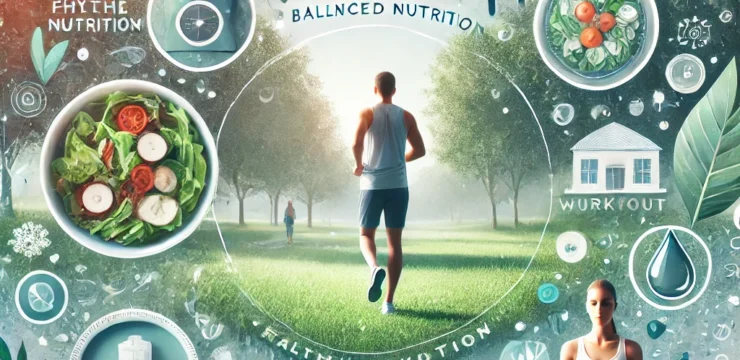Losing weight can often feel like an uphill battle, but with the right strategies, women can achieve their goals more effectively and efficiently.
Whether you want to shed a few pounds or make a significant transformation, understanding the quickest ways to lose weight can help you make the best choices for your body.
Here are some proven methods for accelerating weight loss while promoting overall health and well-being.
1. Incorporate High-Intensity Interval Training (HIIT)
One of the fastest ways to burn fat is through High-Intensity Interval Training (HIIT). HIIT involves short bursts of intense exercise followed by brief periods of rest or low-intensity activity. This method not only helps you burn more calories in less time but also boosts your metabolism for hours after the workout. Try mixing cardio exercises like jumping jacks, sprints, or cycling with bodyweight exercises like squats, lunges, and push-ups for an effective HIIT workout.
2. Focus on Strength Training
Strength training is often overlooked when it comes to weight loss, but it can be incredibly effective. Building muscle increases your resting metabolic rate, meaning you burn more calories even when you’re not exercising. Incorporate weightlifting, resistance bands, or bodyweight exercises like squats, push-ups, and planks into your routine. Aim for at least two to three strength-training sessions a week to see results.
3. Eat More Protein
Protein is a key component in any weight-loss plan, especially for women. It helps to build and repair muscle, keeps you feeling fuller for longer, and boosts your metabolism. Include lean protein sources like chicken, turkey, tofu, fish, and eggs in your diet. A higher protein intake can also reduce your cravings and prevent overeating, making it easier to stick to your weight-loss goals.
4. Cut Back on Refined Carbs and Sugars
Refined carbs and sugars can quickly sabotage your weight-loss efforts. They cause blood sugar spikes followed by crashes, leading to cravings and overeating. Instead of reaching for processed snacks or sugary drinks, opt for whole grains like quinoa, brown rice, and oats. Incorporate more fiber-rich vegetables, legumes, and fruits, which provide sustained energy and help control hunger.
5. Stay Hydrated
Drinking plenty of water is often overlooked in weight-loss plans, but it’s essential for success. Water helps to flush out toxins, supports digestion, and can even help you eat less by curbing your appetite. Sometimes, your body can confuse thirst with hunger, so drinking water before meals can prevent unnecessary snacking. Aim for at least eight glasses of water per day, and try starting your day with a glass of water to jumpstart your metabolism.
6. Prioritize Sleep and Manage Stress
Sleep and stress levels play a huge role in weight loss. Lack of sleep can affect your hunger hormones, making you crave high-calorie foods. Chronic stress can also lead to emotional eating or cravings for comfort foods. Aim for 7-9 hours of quality sleep each night and incorporate stress-management techniques like meditation, yoga, or journaling into your routine to keep cortisol (the stress hormone) in check.
7. Create a Calorie Deficit
The most fundamental principle for weight loss is burning more calories than you consume. However, this doesn’t mean extreme calorie restriction. Instead, focus on creating a moderate calorie deficit through a combination of diet and exercise. A sustainable approach is to aim for a 500-750 calorie deficit per day, which can result in losing about 1-1.5 pounds per week. Tracking your meals with a food journal or an app can help you stay on track.
8. Try Intermittent Fasting
Intermittent fasting has gained popularity as a weight-loss strategy. This involves cycling between periods of eating and fasting, which can help reduce your calorie intake and improve fat burning. Common methods include the 16/8 method (fast for 16 hours, eat during an 8-hour window) or the 5:2 method (eat normally for five days, restrict calories to 500-600 on two non-consecutive days). Before starting any fasting regimen, it’s important to consult with a healthcare professional, especially if you have any underlying health conditions.
9. Cut Out Liquid Calories
Drinks like sodas, sugary coffees, and alcoholic beverages are full of empty calories that can hinder your weight-loss efforts. Switch to water, herbal teas, or black coffee to stay hydrated without adding extra calories. If you enjoy smoothies, make sure they are made with healthy ingredients like leafy greens, fruits, and protein-rich additives to keep them nutritious rather than sugary.
10. Stay Consistent and Be Patient
While quick weight loss methods can help you get started, long-term success is all about consistency. It’s important to remember that healthy, sustainable weight loss takes time. Stay consistent with your exercise routine and healthy eating habits, and avoid drastic fad diets that promise quick fixes. Focus on building lasting, healthy habits that will benefit you in the long run.
Conclusion
Losing weight quickly and sustainably involves a combination of smart eating, effective exercise, and lifestyle choices. By incorporating the above strategies into your routine, you can see faster results while still prioritizing your overall health. Remember that each person’s body responds differently, so find what works best for you and stick with it. Consistency, patience, and dedication will lead to lasting changes and a healthier, happier version of yourself.



